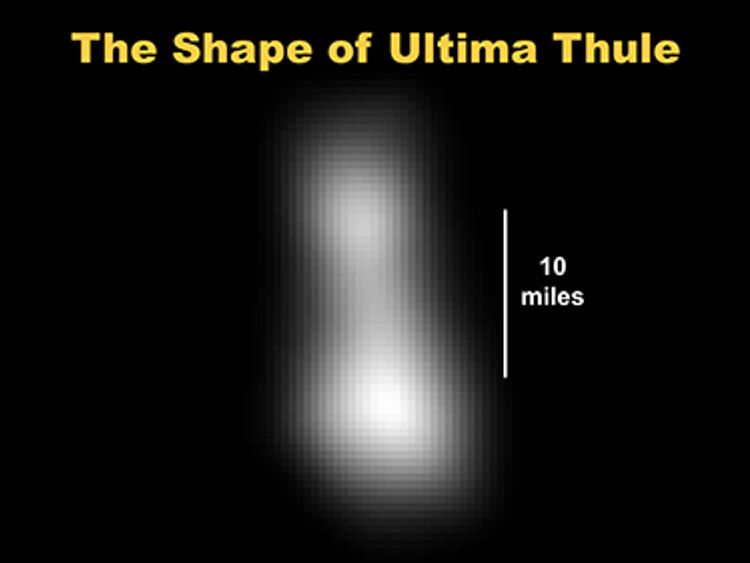NASA has released the first high-definition image of Ultima Thule – a 20-mile long icy space rock, a billion miles beyond Pluto.
It comes after an unmanned spacecraft sent a signal back to Earth after making a successful fly-by past the object – the most distant world ever studied by mankind.
Around 10 hours after reaching Ultima Thule, in the early part of New Year's Day, the New Horizons vessel got in touch with scientists back home.
On Wednesday, NASA officials said they "could not be happier" with the latest image of the "snowman", which it said were "separate objects now joined together".
They said the image showed "the first contact binary ever explored by spacecraft".
 0:12
0:12"This object, which we can now see is a contact binary, used to be two separate objects that are now bound together," NASA wrote on Twitter.
"#UltimaThule used to be two separate objects. It likely formed over time as a rotating cloud of small, icy bodies started to combine.
"Eventually, two larger bodies remained and slowly spiralled closer until they touched, forming the bi-lobed object we see today."
NASA said it named the larger portion Ultima and the smaller section Thule.

The Johns Hopkins Applied Physics Laboratory said the picture was the "most detailed image of the farthest object ever explored by a spacecraft".
Before the new picture, the only image scientists had showed a peanut-shaped blur.
Jeff Moore, the New Horizons geology and geophysics team lead, said: "New Horizons is like a time machine, taking us back to the birth of the solar system. We are seeing a physical representation of the beginning of planetary formation, frozen in time.
"Studying Ultima Thule is helping us understand how planets form – both those in our own solar system and those orbiting other stars in our galaxy."
Data from the New Year's Day fly-by will continue to come in over the coming weeks, with even higher resolution images still to come.
More from NASA
New Horizons project manager, Helene Winters, said: "In the coming months, New Horizons will transmit dozens of data sets to Earth, and we'll write new chapters in the story of Ultima Thule – and the solar system."
The Johns Hopkins Applied Physics Laboratory in Laurel, Maryland, designed and operates the New Horizons spacecraft and manages the mission for NASA's Science Mission Directorate.
[contf] [contfnew] 
Sky News
[contfnewc] [contfnewc]






